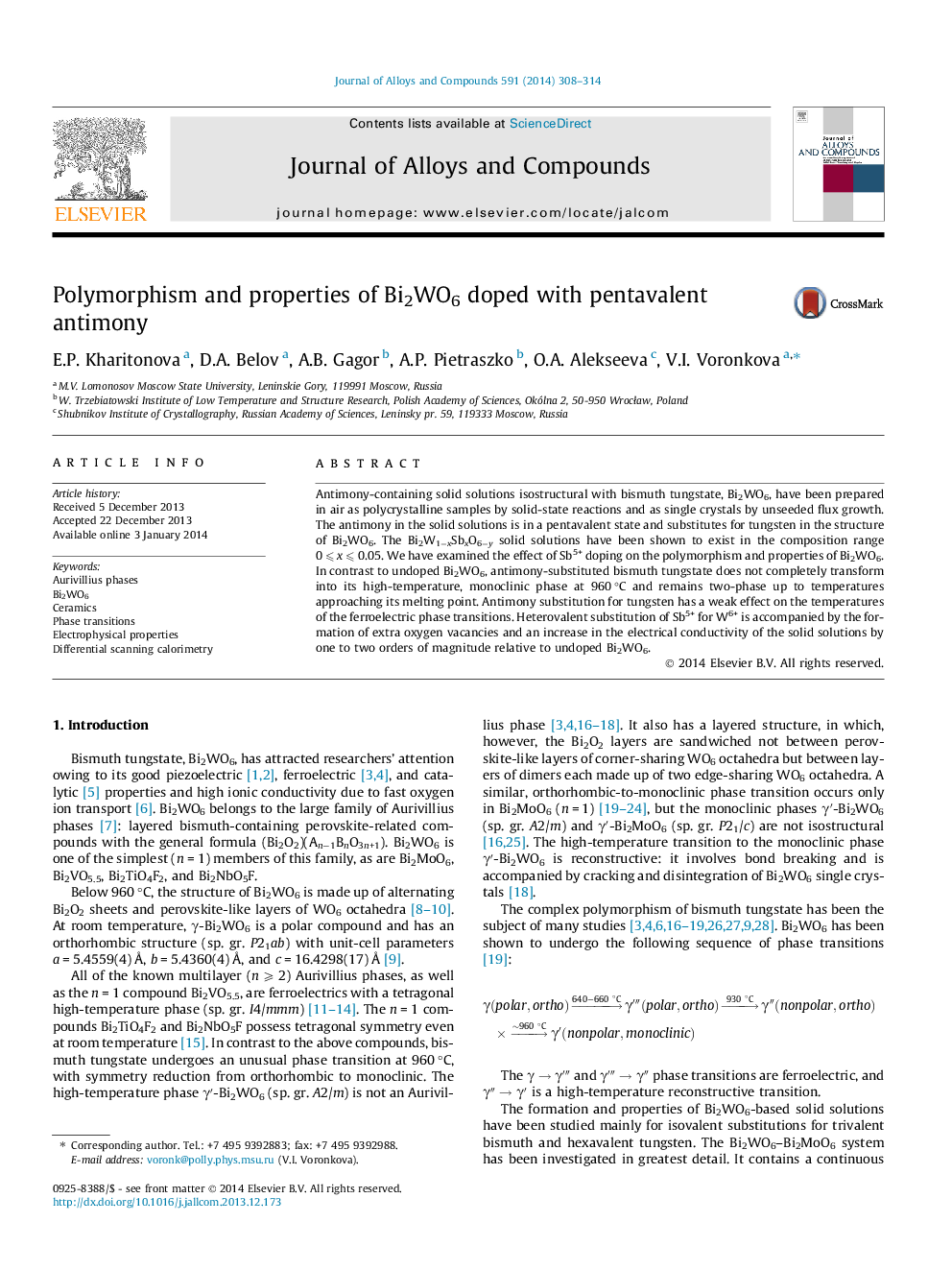| Article ID | Journal | Published Year | Pages | File Type |
|---|---|---|---|---|
| 1611852 | Journal of Alloys and Compounds | 2014 | 7 Pages |
•The limit of Bi2W1−xSbxO6−y solid solutions is at x = 0.05.•Bi2W1−xSbxO6−y does not fully transform into high-temperature monoclinic phase.•Sb5+ has a weak effect on the temperatures of the ferroelectric transitions.•γ→γ‴γ→γ‴ transition near 650 °C was observed as strong permittivity peak at 0.01–8 Hz.•The conductivity of Bi2W0.96Sb0.04O6−y at 800 °C reaches 0.02 S/cm.
Antimony-containing solid solutions isostructural with bismuth tungstate, Bi2WO6, have been prepared in air as polycrystalline samples by solid-state reactions and as single crystals by unseeded flux growth. The antimony in the solid solutions is in a pentavalent state and substitutes for tungsten in the structure of Bi2WO6. The Bi2W1−xSbxO6−y solid solutions have been shown to exist in the composition range 0 ⩽ x ⩽ 0.05. We have examined the effect of Sb5+ doping on the polymorphism and properties of Bi2WO6. In contrast to undoped Bi2WO6, antimony-substituted bismuth tungstate does not completely transform into its high-temperature, monoclinic phase at 960 °C and remains two-phase up to temperatures approaching its melting point. Antimony substitution for tungsten has a weak effect on the temperatures of the ferroelectric phase transitions. Heterovalent substitution of Sb5+ for W6+ is accompanied by the formation of extra oxygen vacancies and an increase in the electrical conductivity of the solid solutions by one to two orders of magnitude relative to undoped Bi2WO6.
Graphical abstractFigure optionsDownload full-size imageDownload as PowerPoint slide
